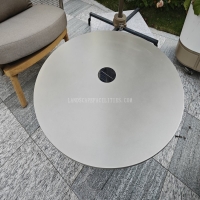Welcome to the website for landscape facilities products and knowledge.
How do manufacturers ensure the trash can is resistant to damage from airborne pollutants?
Manufacturers employ several strategies to ensure trash cans remain resistant to damage caused by airborne pollutants. First, they select high-quality materials such as polyethylene, stainless steel, or powder-coated metals that naturally resist corrosion and chemical degradation. These materials are tested against common pollutants like acid rain, industrial emissions, and salt spray to guarantee longevity.
Additionally, advanced protective coatings are applied to create an extra barrier against pollutants. UV-resistant finishes prevent color fading and material breakdown from sunlight exposure, while anti-corrosive treatments shield metal components from rust. Some manufacturers even incorporate antimicrobial additives to combat mold and bacteria growth in humid environments.
Design also plays a crucial role—seamless construction minimizes crevices where pollutants could accumulate, and reinforced bases prevent structural weakening. For outdoor bins, drainage systems are integrated to prevent stagnant water from reacting with airborne chemicals. Through rigorous material science and smart engineering, modern trash cans maintain durability despite increasing environmental challenges.
Related search:

Recommendation
Outdoor stainless steel table with solar-powered ambient lighting feature - excellent design.